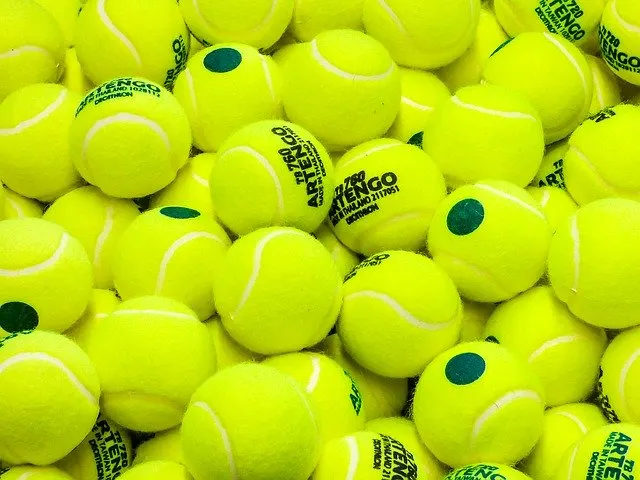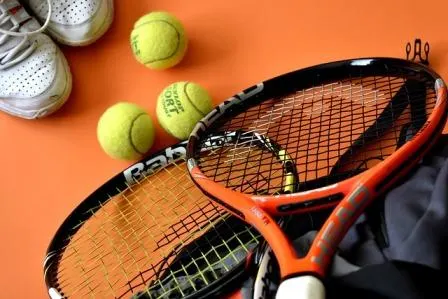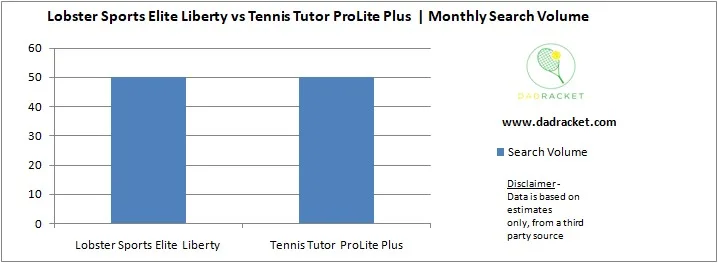
Do you feel you’re not really getting any better with a particular shot in tennis?
Maybe your two handed backhand is a real weakness, or your volleys just aren’t consistent enough?
While having a tennis partner to play with is the ideal solution, they might not be free when you want to practice.
So what other options do you have?
Some tennis clubs have a practice wall, but not everyone has access to this, so a tennis ball machine is one of the best options to improve your game.
What should you consider when buying a tennis ball machine?
You should think about the battery life of the tennis ball machine.
If you’re planning lots of long sessions you don’t want something that will stop working after 30 minutes.
Also, think about the weight of the machine.
If you want something portable and easy to move around, choose a lightweight product. If it’s something which will be in the same place most of the time, then a heavier option might be ok.
If you don’t want to spend half your practice session picking up tennis balls, choose a machine which has a large ball capacity so you can perform a lot of reps practicing a particular shot.
To save time walking across the court to change any setting during a practice session, consider a machine with a remote control so you can alter any of the program features.
Here are two popular options to consider:
- Lobster Sports Elite Liberty
- Tennis Tutor ProLite Plus
Let’s take a look at a quick overview of the two before looking at them in more detail.

Lobster Sports Elite Liberty Review
Lobster Elite Liberty is a lightweight ball machine designed for easy transport and storage. It includes two large 8-inch all-terrain wheels and a tall handle, allowing you to easily push or pull it on and off the court.
The Elite Liberty is the entry-level ball launcher in the Elite series from Liberty Sports. It lacks the versatility of some of the more expensive options but includes many standard features.
The control panel includes options for ball speed, feed, and spin. You can adjust the speed between 10 and 80 mph and set the feed rate from 2 to 12 seconds.
Instead of simply turning spin on or off, you can adjust it to add underspin or topspin. You can also turn horizontal oscillation on or off or manually adjust the elevation between 0 and 50 degrees.
It comes equipped with a rechargeable battery, offering two to four hours of operation on a full charge. However, it takes about 18 to 24 hours to fully charge.
The machine measures 29″ x 21″ x 15.5″ when folded and weighs about 35 pounds. To store the ball launcher in a small closet or trunk of your car, simply remove the ball hopper and fold the handles down.
Liberty also sells a variety of optional accessories, including extra battery packs, fast chargers, and remote controls. You can add hours with the optional battery pack or shorten the charging time.


Pros
- The ball machine is compact and easy to transport
- The large hopper holds 150 balls
- The controls are easy to read and understand
- The control panel allows you to add topspin or underspin
Cons
- The random horizontal oscillator is easy to predict
- The optional accessories are expensive
- The provided charger takes a long time to charge
- Wet balls may jam the ball machine
- No programmable drills
Tennis Tutor ProLite Plus Review
The Tennis Tutor ProLite Plus is a compact ball launcher. It comes with a rechargeable battery, manual elevation control, and several ball settings.
The machine is a black box with plastic flaps that open to reveal the ball hopper. It measures 20 x 22 x 14″ and weighs 34lbs with the built-in battery. Tennis Tutor also offers a corded AC model that weighs about 27 pounds.
The Tennis Tutor ProLite Plus is small, but it is awkward to carry. The machine does not have wheels or a large handle. It has two small handles on the sides and requires both hands to carry it.
The controls are incredibly simple to operate. The control panel has on/off switches for power, topspin, and the optional oscillator. The two dials allow you to adjust the ball speed and feed rate.
You can manually set the elevation to adjust the ball trajectory. You can set it to deliver groundstrokes or lobs.
The ball speed range is 10 to 60 mph, while the feed rate is adjustable between 1.5 and 10 seconds. When you turn the machine on, a start-up delay gives you enough time to get to the other side of the court before the balls start flying.
Tennis Tutor offers several optional accessories. The oscillator delivers random shots while the optional air pedal remote adds foot-operated controls. A two-button controller is also available for complete remote operation.
Pros
- The machine is durable and designed to last for many years
- The control panel includes simple switches and dials
- The compact size makes it easy to store
- Includes manual adjustment for ball trajectory
Cons
- The oscillator costs extra
- The battery needs to be charged for at least half a day
- No programmable drills
- The controls are a little sensitive, resulting in slightly faster or slower speeds
- The rechargeable battery requires replacement after about 500 to 1,000 charges
Which one is more popular?
Without access to sales figures, it’s impossible to know how many of each model are sold every year. However, if you look at the chart below you can see in terms of people searching online, both models are as popular as each other (50 searches a month).

Bottom Line
If you’re unsure which option is the best for you and your game, here are some other things to consider.
The Tennis Tutor Plus comes with a 3 year guarantee, where as the Lobster Elite only has 2.
The Lobster Elite has a larger ball capacity, so you can spend more time playing, and less time picking up balls in between drills.
If you can use the Tennis Tutor without the battery and just use A/C, then it’s a few kilos lighter than the Lobster Elite, so it’ll be a little easier to carry around.
Although the Tennis Tutor has a random oscillator for side to side movement, if you want to work on your movement in a consistent drill alternating between backhand and forehand, the Lobster is the better option. Also, you have to pay $100 extra for the oscillator feature for the Tennis Tutor.
